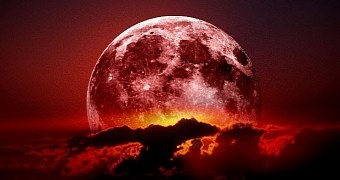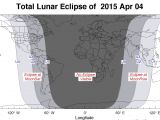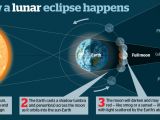This Saturday, April 4, we, Earth dwellers, will get to witness a blood moon. At 3:16 a.m. Pacific Daylight Time (PDT) on the dot, the Moon will move into our planet's shadow. About an hour and 45 minutes later, it will be completely engulfed by it and a total lunar eclipse will happen.
Today's lunar eclipse follows another cosmic event that happened about two weeks ago and that also had us staring at the sky: the March 20 total solar eclipse, when the Moon passed in front of the Sun and obscured its silhouette, leaving nothing but its corona visible.
As mentioned, this Saturday's lunar eclipse will begin at 3:16 a.m. PDT and will reach totality at 4:58 a.m. PDT, which is the equivalent of 10:16 a.m. Coordinated Universal Time (UTC) and 11:58 a.m. UTC, respectively. To translate this into your current time, visit World Time Server.
Location, location, location
Suppose you've checked to see when the eclipse will happen in your timezone, you might have gotten an answer like midday or early afternoon. I hate to break it to you, but this means that you won't get to witness the event first hand and will have to settle for whatever photos make it online.
As detailed in the diagram included in the gallery below, the eclipse will only be visible to a select few, and even fewer will get to see it reach totality. Besides, totality is expected to last for only about 5 minutes, so even the luckiest of the bunch might miss the eclipse if they make the mistake to blink.
The eclipse will be quite a sight
If you happen to be in the right timezone to see our natural satellite's figure being completely engulfed by Earth's shadow, brace yourselves, as the sight will be breathtaking. Thus, astronomers say that, during today's eclipse, the Moon is poised to turn red.
No, the Moon won't spray-paint itself to change color or anything of the sorts. It will stay the same. What will change is the way we see it. During the eclipse, light from sunsets and sunrises across the globe will seep onto its surface and make it appear red.
“This incredible light beams into the heart of Earth's shadow, filling it with a coppery glow and transforming the Moon into a great red orb when viewed from Earth,” NASA scientists explain.
Just in case you miss today's total lunar eclipse, you should know that another one will happen about 6 months from now, on September 28. As for total solar eclipses like the one that played out this past March 20, we won't get another until March 9, 2016.

 14 DAY TRIAL //
14 DAY TRIAL // 


